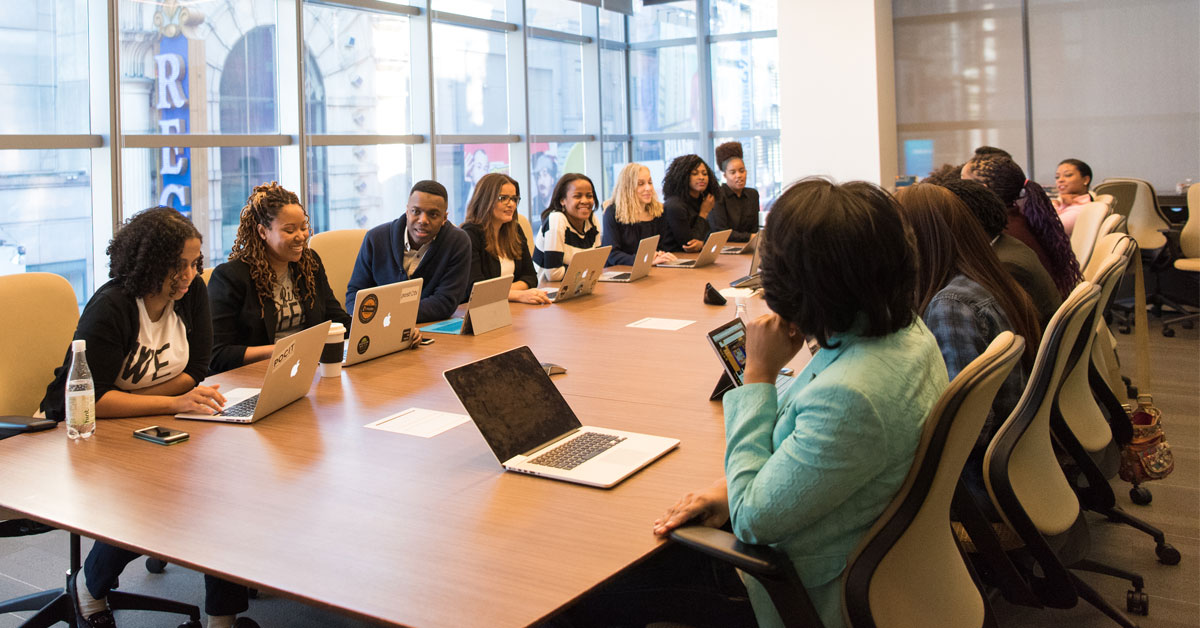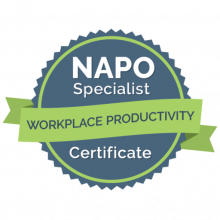Our last blog post was all about strategies for creating more effective meetings during the planning stages. This time around we’re sharing tips on running more time efficient, productive meetings. By following these 15 strategies, your team will go from dreading meetings to finding them beneficial and productive.
1 | Start on time
Those who are late will continue to be late if they know you are waiting (while everyone else will be agitated). Arriving five minutes early is the new on time.
2 | Reduce distractions
Go topless…as is no laptops, smartphones, or other electronic devices.
3 | Restate purpose
As soon as the meeting begins, clearly articulate the purpose and desired outcome. For example, the purpose is to determine what to present to XYZ client to improve its fee structure. The desired outcome is to determine three solutions—identifying one as the primary solution, and two as secondary positions.
4 | Manage time
As a meeting facilitator, develop a reputation for being ruthless about avoiding time waste. Control the beginning, ending, and break times carefully. And, stay on target. Even a gentle slide off topic can compromise a meeting. You want all participants to leave feeling that the objectives were met, thus you may need to be the bad guy and reel conversations back to the topic at hand.
5 | Park it
Use a projected screen, white board, or oversized notepad on an easel as the “parking lot” for all off-target topics. As great ideas surface, but do not address the current topic, record them for later in the meeting, or another time altogether.
6 | Headline it
Ask people to begin their comments or responses by headlining—stating clearly in 10 words or less—the essence of what they plan to talk about. This technique can prevent or minimize rambling dialogue.
7 | Add margins
Plan for 25- and 50-minute meetings rather than 30- and 60-minute ones so people can reset before heading to their next obligation.
8 | Pause and debrief
Headline the issue to be discussed and ask everyone to pause for a minute or two and jot down their thoughts related to the issue. Then debrief the group in a manner that will facilitate the full participation of all attendees. For example, call on the less vocal attendees first and protect them from premature criticism from the dominant, outspoken attendees. As the meeting facilitator, if you plan to comment, save your comments for last.
9 | Confirm objectives
Determine if meeting goals were met. If not, determine what needs to be done and when to address the unmet goals.
10 | Assign roles
Have participants share responsibility for running meetings. This will encourage participation and increase focus. Consider these roles:
- Facilitator leads the group through agenda systematically at an appropriate pace and encourages full participation by all
- Timekeeper helps the group keep on track with the timing of the agenda, perhaps using simple hand signals to suggest there are 10/5/0 minutes remaining
- Action monitor captures and summarizes next actions, who is assigned to each, when they are due, and sometimes how the work will be completed
- Scribe visibly posts key ideas, points, and comments during discussions
11 | Seek closure and commitment
As each topic is discussed, ensure the group brings it to a clear closure. Determine next steps for the decisions reached and seek commitment from participants to take responsibility. End each meeting with a verbal summary of decisions, next actions, responsibilities, and timing for each.
12 | You break it, you buy it
If cross examining is rampant and time-consuming, then use the “your break it, you buy it” technique. Address the critic by saying something similar to this, “Steve, you seem to have serious concerns about this issue. At our next meeting, I’d like you to present a thorough analysis of this proposal along with three or four workable alternatives.” Only a couple of applications of this technique will likely cure this negative conduct.
13 | Encourage involvement
Be aware of those that are less vocal, and ask directly if they have anything to share? Ask for their view on specific approaches, potential challenges, impacts, next steps, etc.
14 | Review x2
For recurring meetings, action items should be reviewed twice. First, at the end of the meeting, so that participants can openly commit to their proposed actions. This is an excellent opportunity for participants to add to, subtract from, or adjust their actions. The second review happens at the beginning of the next meeting. Knowing this open review will occur helps spur team members to complete actions ahead of time.
15 | Don’t be a dictator
Engage in dialogue. Express your opinions and differences in an effort to arrive at what’s best for the group. Let at least 3 people speak before you speak again. In a spirit of mutual understanding, strive for commonalities and a sense of community rather than debate driven by your personal interests. Join the discussion.
Please share what you’ve done to improve time management and efficiency during meetings in your office.



